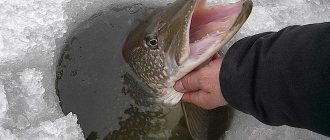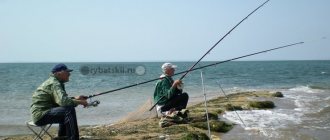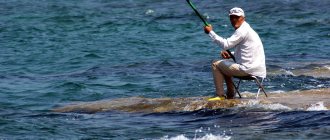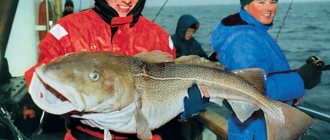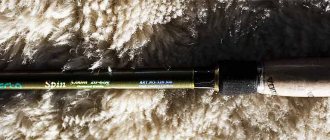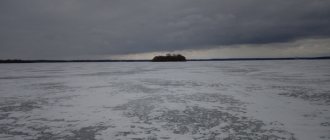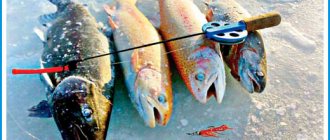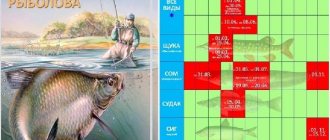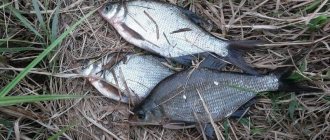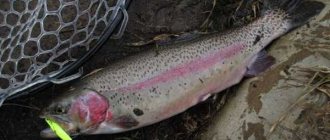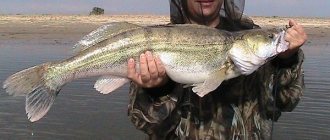If you are bored with freshwater fishing, and a pike or carp weighing 5-6 kilograms no longer seems like desirable trophies, then welcome! Sea fishing is just what you need. There is a certain extreme in it, and even experienced fishermen, who constantly catch cold-blooded fish on a river or pond, and usually have the most “catchable catch” there, may well fail at sea. Easily! After all, sea fishing requires the presence of certain skills, and fish that live in salt water have completely different characteristics than freshwater, and their species are significantly different. The nature of the fishing, the bait, the groundbait, and the tackle are also different. But you shouldn’t be so upset right away, because where has our fishing soul been (that’s right: it hasn’t disappeared anywhere)! Therefore, we prepare carefully and find out what sea fishing is and what it is eaten with. And then, taking with you the necessary gear at sea, you, like the most avid fisherman, will definitely get maximum pleasure from your vacation.
Fishing at sea. Peculiarities
Of course, this kind of fishing has its own distinctive features. Firstly, marine fish are characterized by greater activity and energy, since they live in more difficult conditions than freshwater fish, especially pond fish. The entire water space is filled with creatures fighting for their survival, looking for prey. Therefore, it is much more difficult for us fishermen to catch sea fish (before the trip, it would not hurt to at least superficially study the main species of inhabitants, those that we are going to catch, their habits and diets). Secondly, sea fishing is more like a sporting event than ordinary fishing. Because it requires from the fisherman good physical fitness, ingenuity, and skills that are almost never useful to his fellow river hobbyist. And thirdly, it should be taken into account: fishing at sea from the shore is least effective. You should prepare to cast from the pier or go out to the open sea by boat, which also requires careful preparation and a certain amount of caution and even courage (especially if a storm begins, and you are a kilometer from the shore in a fragile rowing boat). But we are no strangers to difficulties. So let's enrich ourselves with knowledge, or even vacation is just around the corner.
Choosing a fishing spot
The technique of fishing at sea is somewhat different from fishing on lakes and rivers. This is due to the large number of fish, strong currents and clarity of the water. Fish in the sea are quite active even in winter, but the best time to fish is in August. At this time of year there are no strong winds, and because of them, the fish, fearing being thrown out by the current, go deeper.
Fishing at sea can be done in completely different places, but everyone should know that the choice of territory determines the selection of equipment, as well as the required level of skill.
Citizens fish at sea in the following places:
- From the shore. This method is the most popular among people, regardless of whether you are a beginner or an experienced fisherman. You can choose absolutely any gear.
Fishing is effective both close to the shore and remotely. The baits will be completely different.
The main thing is not to forget that there are fish in the sea that can harm humans. People especially often suffer when fishing from the shore, stepping naked on poisonous individuals.
- From the pier, close to the beach. From this place, beginners often fish with spinning rods. You can usually meet a lot of other anglers there. This fact negatively affects the amount of prey caught.
- From the cliff. As a rule, fishermen with good skills choose such a place.
Who can be caught, when and for what?
Let’s not travel far for sea fish, say, to Norway, since not many people can afford it today, but let’s turn to our beloved southern seas. How good, for example, is sea fishing in Crimea, almost at any time of the year! Which fish can be successfully caught in this shallow and gentle sea? And what is the best way to fish, what gear? What bait and bait should I use? We asked experienced fishermen who have fished on the sea surface more than once about all this, and this is what they said, according to their own experience.
Fishing from the shore using bottom gear.
Bottom coastal fishing allows the fisherman to get such Black Sea trophies as:
- 1 flounder;
- 2 mullet;
- 3 foreheads;
- 4 croakers;
- 5 garfish and other fish.
The structure of the bottom tackle is quite simple. A spinning rod with a cast weight of more than 300 grams is necessary for long-distance casting and reliable fixation of gear with a load of 200 grams or more on the seabed. If you use light weights, then the waves and sea current will not allow you to fix the bait with hooks on the seabed and fishing will not bring results. The spinning rod is equipped with a spinning reel from 3000, this will ensure reeling of 200 - 300 meters of fishing line. For bottom tackle, use a line with a dough of 30–40 kilograms.
Saltwater angler's tip: When installing a bottom hook, you should put a foam ball on the shank of the hook, which will raise the hook above the bottom seaweed and make the bait more attractive. This tip is suitable for catching small fish, including flounder.
Goby
Of course, this familiar fish is the easiest to catch. And not a single sea fishing trip in Crimea is probably complete without this big-headed miracle. Because he is greedy for bait of animal origin, and clings to the hook, even when the fisherman himself does not really want it. There have been cases when, for example, a five-hook bottom caught five bulls simultaneously in one cast. Of course, this is in the presence of the so-called zhora. But in general, the goby bites almost all year round (in winter, however, less actively). Both bottom and float gear for sea fishing. And you can catch it with pieces of fish (experienced fishermen, in order not to waste extra time and money on bait, immediately dismember the first goby caught into small pieces and use them as bait for hooks), mussel meat, shrimp, squid. The worm, sea and regular, is well used. The main thing is not to forget that the bull loves meat dishes and swallows them with pleasure. Yes, it swallows it, because sometimes you can only remove the hook from this predator by lightly gutting it, the tackle gets so deep! Excellent and productive sea fishing from the shore, rocks, piers. For a large specimen (and there are not only small gobies) you have to go by boat or motorboat.
The difference in cost and what affects the price?
As for the price, it depends on the manufacturer. Specifically, Chinese products are inexpensive, starting from 700 rubles. Accordingly, in terms of quality, many fishermen do not consider such gear worthy and suitable for fishing in sea conditions.
Greater preference is given to expensive branded spinning rods, Scandinavian-made products, the price of which can reach 30,000 rubles. Many fishermen use Japanese gear for sea fishing.
The price may be affected by the assembly of the spinning rod purchased to go sea fishing. Such products are:
Marine reels
Tackle for sea fishing
- By root_kingfish
- 02.03.2020 16.04.2021
Selecting gear for sea fishing
You are on a site that will help you save your money.
There is no place left on earth where modern transport cannot take us. Previously, avid fishermen were limited to local reservoirs, but now you can go to the most exotic countries and catch a wide variety of fish. And if you decide to go sea or ocean fishing, then you need to know what gear you will need for this.
Choosing gear for sea fishing is a responsible and important moment. The outcome of the fishing will depend on their quality and reliability. Even super powerful reels and spinning rods, with which we catch 100-kilogram catfish, are not suitable for use at sea. And it's not just about durability. Marine gear should not deteriorate from the action of salty sea water, which has a destructive effect on many materials. But let's take it in order.
Marine reels
The main difference between a reel for sea fishing and a regular one is its resistance to an aggressive salty environment. All mechanisms of the product must be reliably protected, and the metal components of the structure are not subject to corrosion. The undisputed leaders in the production of fishing tackle, including sea reels, are SHIMANO and DAIWA. Their products meet all international standards and requirements. The most famous athletes and champions of fishing tournaments use the products of these companies.
Tips for fisherman: Rod for sea fishing from the shore - What to choose for fishing
Marine reels are divided into:
1) Inertial – similar to those found on fly fishing rods.
2) Inertia-free – ordinary spinning reels (commonly called meat grinders).
3) Multipliers are power marine reels that resemble small winches. These are the types of reels used to catch giant marlin and sailfish.
Marine multipliers are expensive, but the most reliable. In addition to trolling, they can be used for vertical fishing. Working with such marine reels when fishing is much easier and simpler than with spinning reels.
Rods for sea fishing
When it comes to catching trevally, tuna, wahoo or marlin, you need to be prepared to fight these mighty trophies. Therefore, sea fishing rods are made very strong. It does not require the same sensitivity that spinning rods for river fishing have. You will hardly be able to miss the bite of sea fish. Saltwater rods can be of different lengths and consist of one, two or three parts. The fewer parts, the stronger the rod blank.
Some sea fishing rods have guide rings, others have special rollers that relieve the load when winding the cord. All metal parts of fishing rods for sea fishing must be protected from the damaging effects of salt water. This is what distinguishes sea spinning rods from river ones. We already have a saltwater reel and rod. Let's choose further.
Lines and cords for sea fishing
Marine fishing lines have special requirements, both in terms of strength and wear resistance. After all, even sea baits can weigh hundreds of grams, and constant casting of such weights creates a large load on the fishing lines at the points of contact with the guide rings. It is important that when it comes into contact with stones, shells and corals, the fishing line should not break. In salt water, different types of marine fishing lines are used.
1) Not the usual nylon threads that are used in float and spinning fishing. But here they are of large diameters and have special coatings that protect them from the aggressive marine environment and ultraviolet radiation. Nylon fishing line is inexpensive, but has significant disadvantages. This material stretches greatly and loses strength at the knots. Although marine fishing line is cheap, it will have to be changed more often than braided cord.
3) Polyester thread for sea fishing or Dacron. Dacron thread is something between braid and nylon thread. It does not stretch much and has high mechanical strength. This line is not widely used due to properties that do not allow it to be used on spinning reels when casting. Basically, Dacron thread is wound on marine multipliers when fishing vertically.
Sea lures
To catch predatory fish at sea, the same baits are used as for river fishing. But their sizes differ significantly. Lures for sea fishing can weigh tens or hundreds of grams. Heavy lead jigs are used to fish vertically. There is no need to use force casting. The jig sinks to the bottom and twitches methodically. You will need strength when landing fish from great depths.
Poppers have gained great popularity among marine lures. They are used to catch fish in shallow areas of the reservoir. This fishing is very spectacular and exciting. When fishing with sea poppers, you can see the very moment of the bite, which causes strong emotions among fishermen.
On the seas they also fish with well-known wobblers and jig baits. These are various silicone twisters, vibrating tails and octopuses. Silicone is much cheaper than other marine baits, and it is less catchy when properly presented to predatory fish.
Hooks and tees for sea fishing
Sea predators do not forgive mistakes. Sea hooks are as important a component of the tackle as anything else. The difference between sea hooks and river hooks is their increased strength and resistance to salt water. With a dull or weak hook, you can’t avoid an unfortunate mishap. Therefore, never skimp on this element of equipment and buy products from well-known, trusted brands.
You should have different models of sea hooks in stock for different fish. At sea, you never predict who you might run into on your next fishing trip. After use, rinse hooks in fresh water and dry. This way you will extend their service life for a long time. The same applies to marine equipment: swivels, carbines and winding rings. Cheap Chinese counterfeits will fail you at the most inopportune moment. It would be a shame if the long-awaited trophy was lost right next to the boat due to an unbent carbine.
Belt with emphasis for sea fishing
If you intend to catch such strong fish as trevally, marlin, and sailfish, then you cannot do without a belt with an emphasis. It will help make fishing easier and relieve stress from your back and arms. Only in the process of working with a massive fishing rod in a boat rocking on the waves will you appreciate the beauty of this element of equipment for sea fishing.
And for those who are just about to go on the trophy fishing trip of their dreams, we want to give advice. Don't procrastinate. Collect sea gear, put sea bait into boxes and go on an adventure.
No tail, no scales, dear fishermen!
Similar articles
news
Such a reel must be designed for at least 200 m of braided fishing line with a diameter of 0.4-0.8 mm. Without exception, all baitcasting reels intended for sea fishing have line guides, and some models also have line counters (a useful part, but rather unreliable and not at all necessary).
Horse mackerel, flounder and others
Of course, as they say, you won’t be satisfied with just one bullock. But there are a lot of other fish in the Black Sea. And the productive time for successful fishing is mid-late summer and warm autumn. Horse mackerel, garfish, Kalkan, glossa, sometimes mullet, mullet, pelengas, even katran. All these fish, of course, with a certain situation and accompanying luck can be caught using various tackles for sea fishing. By the way, it’s time to talk about them in more detail.
What kind of fish can you catch?
When fishing at sea, you can catch completely different species of individuals. It is quite difficult to predict what kind of fish you will be able to get today. Often found at sea:
sea urchin;- cod;
- mackerel;
- horse mackerel;
- mackerel;
- red mullet
In less salty waters or at river mouths you can catch:
The methods of catching fish can also be different, but you need to choose the right bait. Fishermen with extensive experience even hunt sharks in the sea. To catch such an aggressive predator, you will need to show cunning, as well as withstand the physical stress that will undoubtedly arise when fighting it.
This fish is caught from a boat or yacht. Fans looking for small sharks can find them on the shores of Bulgaria or Crimea. Larger specimens live off the coast of Africa. When fishing, you need to take care of the boat and the choice of spinning rod in advance. It does not have to be long, but the main thing is that it is strong and elastic.
Fishing rod
If you are not too much of a saltwater fishing professional, then a float rod for sea fishing is what will suit you best. However, it should also differ from its lake-river counterpart in some respects. They relate not so much to design features, but to the quality and strength of the equipment, the use of much thicker fishing lines and strong hooks.
How to catch?
- They usually fish with a fishing rod from the shore, where it is possible to cast bait at least half a meter deep, from stones and rocks, from piers and moorings. Yet, despite all the specifics of fishing, it is a mass phenomenon.
- For the bull, it is best to take an ordinary telescope with a length of just over 4 meters. A reel with a line reserve of 20 meters, inertial, not very bulky. Leashes with fishing line no thicker than 0.10-0.15 mm.
- But in most cases, floats are completely unnecessary (for bulls). Because if this fish bites, you will instantly feel it through your hand.
- Hooks – from 4 to 7 numbers.
- For other fish, modifications to the gear may be slightly different.
Fishing in the sea, what gear is the most effective?
The choice of gear must be taken seriously. Properly selected equipment will bring success in fishing. The assortment is very high, it is necessary to take into account the main characteristics.
Gear properties:
- durable rod material;
- stability in windy weather;
- light in weight and easy to use;
- possibility of long casting;
- withstands currents and water fluctuations.
Type of rod required:
- Spinning will allow you to fish from the pier, beach and rocks. The rod is durable and resistant to metal corrosion. You can catch large and small fish with it.
- A bottom fishing rod is effective only in calm weather for catching small specimens of perch, eel, and flounder.
- A float rod is suitable for small depths of no more than 2 m. With this tackle you can easily catch small and medium mackerel, perch and crucian carp. It is necessary to select the equipment correctly.
- A telescopic rod is necessary for casting from rocks. You can use it to catch beluga, anchovy and horse mackerel.
- Homemade gear contains rigid reels and is ideal for fishing from the shore. It will help you catch herring, gobies and eels.
Spinning rod for sea fishing
This kind of fishing is both modern and the most sporting. Indeed, a spinning fisherman must be well prepared both mentally and physically! The greatest catchability, judging by experience, on the Black Sea coast can be observed immediately after sunset and right up to darkness. What is there to observe - it’s better to take part! Night fishing along the lunar path will also bring good luck (although it won’t hurt to stock up on a headlamp), although the bite is somewhat weaker at night and in the pre-dawn time. They fish from the shore with a spinning rod. Preferably in quiet, deserted places, away from beaches and bustle. The bottom is best pebbly and rocky. You can use stones protruding from the water along the banks.
- The rod is stronger, up to 2 meters long. The reel is inertialess. As a tackle - a braided cord with a good breaking margin, medium-sized hooks.
- The baits used are silicone and wobblers. For scorpionfish, for example, the best thing is a rubber octopus. When the coastline is moderately loaded with stones, it is better to use wobblers, from those models that go closer to the bottom. Apply the silicone closer to the rocks where the fish may be hiding, alternating with jerks and then taking up the slack in the fishing line (with a pull). Hooking is done immediately after bites, giving the fish a good taste of the bait.
Fishing at sea from the shore with a spinning rod
Summer has begun - the holiday season.
A traditional family vacation for many is still a trip to the Black Sea coast. This is a good thing, but for many spinning anglers, a multi-day outing to a fishing base on the shore of the “fishing Eldorado” is preferable. Unfortunately, not all wives accept this option, and neither do children. And there’s only one vacation... If you have this situation, don’t be upset! And on the Black Sea you can fish with a spinning rod! This fishing is very interesting, exciting and rewarding, and after your vacation you will have a lot of impressions! The sea coast, especially with a rocky bottom, is densely populated by various representatives of ichthyofauna, including predators. In general, all sea fish can be called predatory! Of greatest interest to the spinning angler are scorpion fish, sea crucian carp (weasel), sea bass, bluefish, horse mackerel, greenfish, galley (conger eel), croaker and goby. The size of sea predators is not very large. The catches are dominated by individuals weighing up to 400 grams. But this does not mean that fishing is not interesting! So, for example, 200 grams of lassir will give you a light so that after catching your hands will shake for a long time. A spinning rod with dough up to 10 grams bends into an arc when fished!
The peculiarity of sea fishing is that you need to go to the coast at dusk and leave before sunrise! Most predators are active at night. In principle, the fish feeds all night, but there are so-called peaks of activity. The best bite is observed with the onset of complete darkness, and continues for about two more hours. Then the fish's activity weakens and resumes two to three hours before sunrise. In two hours of activity, you can earn a lot of bites, and a wide variety of fish. You never know exactly what fish you'll catch on your next cast, and that's one of the things that makes saltwater spin fishing fun.
As I already said, the most promising places for fishing are rocky shores. There are a lot of them on the Black Sea coast! It is not necessary to look for some wild places for fishing. You can fish excellently on the beaches, directly from the shore, or by choosing a pier. By the way, in resort areas, beach fishing has its advantages. The light of restaurants, clubs and hotels can completely replace natural light, and it will be more convenient for the spinner to perform various manipulations with bait and caught fish. However, even if the beach is well lit, the spinner should still have a headlamp on his head. Without him on the night coast it’s like without a leg.
What gear should you take with you on vacation? Taking into account the specifics of fishing, the best choice is light or street rods of the “rockfish” concept. They were created specifically for sea fishing with a spinning rod from the shore. This type of fishing is very popular in Japan, and the engineers of Japanese fishing companies know exactly what qualities a spinning rod should have for such fishing. Rock fishing sticks are lightweight, sensitive and have good range. The thin tips, which perform the function of a nod, are painted white. Due to the natural ability of white to reflect light well, the tip is perfectly visible on a poorly lit beach or at dusk. The reel should have a smooth ride, and the tackle should also be well balanced. An important point: all elements of the reel that have contact with the cord must be coated with a coating that is resistant to salt water. As for the cord, ideally it should be from a marine series specifically designed for rock fishing. The qualitative difference between such cords is that when in contact with stones and shells, it does not fray, which means it lasts longer. In the absence of the possibility of using such a cord, a fluorocarbon leash, 3-4 meters long, is mandatory. It will reliably protect your wallet from constant loss of baits due to cuts on stones covered with shells.
The gear described above is an ideal option that will allow you to get maximum pleasure from the fishing process. But don't fret if you don't have a lightweight rockfishing kit. Using all kinds of lead equipment, you can successfully fish with any, even the cheapest spinning rod. The fishing technique is not much different from catching the same perch in freshwater bodies.
I’ll tell you briefly about the baits. At sea you can use absolutely any type of bait up to 5 cm in size! The most effective are wobblers and jigs. Wobblers must be deep, with a long blade, which will serve as good protection for the bait from being lost in the stones. However, fishing with wobblers is successful only during periods of high fish activity. When the bite is bad, I recommend using jig baits! You can fish with regular vibrating hooks and twisters of the “old generation”, but it is better to use an edible bait. It significantly increases the number of bites, and edible baits, due to their strong smell, attract fish better. In conditions of poor bite, the most effective are retrieves with long pauses, when the bait simply lies on the bottom. This is where the properties of edible rubber come to the fore! I do not recommend equipping silicone baits with classic or articulated round jig heads, as there will be a large number of losses in the stones. It is best to use jig-rig type rigs with drop-shaped or cylindrical weights, or use lead rigs with a bullet-shaped weight.
Vacation is just around the corner, friends! I am sure that fishing with a spinning rod at sea will give you no less pleasure than the usual lake and river fishing for traditional predators of the middle zone.
Baits, lures, bait
Let's return to the age-old question: what to catch and what to feed? After all, bait in marine conditions should also differ from freshwater. Place bait itself is used quite rarely. You can feed them with ground fish in a meat grinder, crushed mussels, of which there are tons of them on the Black Sea!
- Among the baits, the most popular are the same mussels. After all, stocking up on them for the entire fishing trip is not particularly difficult.
- Crustaceans (small shrimp) are also in demand, especially in the summer. Walk along the coastal zone with a net, and the bait is ready. If you’re lazy, you can buy it at the market very cheaply!
- Fresh fish meat. It is used mainly for catching the same goby from a pier or rocks.
- The sea worm (Nereis) is a universal bait that lives in coastal soil. If, again, you are too lazy to dig, then you can buy a couple of boxes at the nearest market - it should be enough for one fishing trip. And almost any sea fish of various sizes bites on it. Happy fishing!
What kind of fish is found in the Black Sea?
This area is home to almost 180 species of fish. Often caught by fishermen:
- Ruffs.
- Flounder.
- Mullet.
- Gobies.
- Sea bass.
- Red mullets.
- Horse mackerel.
- Sprat.
- Herring.
- Acne.
- Anchovy.
In summer it occurs:
- Tuna.
- Pelamida.
- Mackerel.
- Rarely, but you come across sultanas.
- Beluga.
- Sargans.
- Gorbyl.
- Dark.
There is an abundance of fish of different sizes in the Black Sea. Gobies are popular and are a delicacy for many. To attract their attention, it is better to place the bait at the very bottom. There are a lot of mullet in the sea near the shore, singili, a medium-sized fish with an orange spot on the cover of the gills.
Fishing in the Crimea, closer to the Caucasus, is successful for small horse mackerel. Quite large individuals are found not far from Georgia and Abkhazia. Horse mackerel often recklessly searches for prey, literally jumping out of the water. If you find yourself at sea at such a moment, catching horse mackerel will not be difficult.
Catching sea crucian carp with a fishing rod is successful in the waters of the Black Sea; shrimp will be used for bait. Beautiful bright wrasses are found in the coastal zone closer to rocks and stones overgrown with algae. The wrasse fits on almost any tackle. There are a lot of perches in the sea; anglers love to catch this type of fish.
There are, of course, a lot of crabs, shrimps, and mussels of various sizes in the sea. But poisonous fish can also be caught on a hook: dragonets, sea ruffes, which are similar in appearance to other species. You need to be careful. If the fish is unfamiliar to you, it is better to release it back to avoid poisoning.
